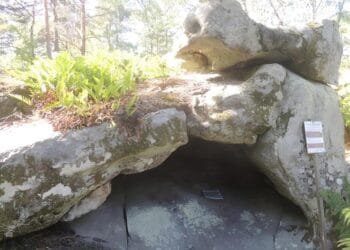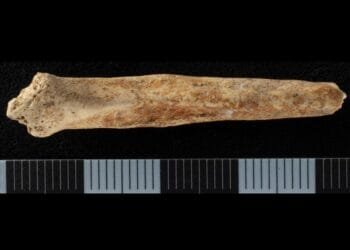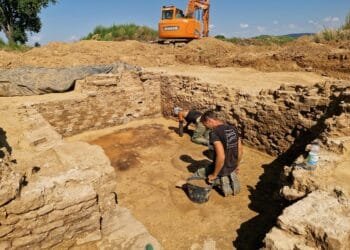Archaeologists from France’s National Institute of Preventative Archaeological Research (INRAP) have unearthed an extraordinary Roman domus dating back to the 2nd century CE on the outskirts of ancient Durocortorum, now modern-day Reims. The discovery includes three exquisite bronze statuettes and fragments of frescoes, highlighting the cultural sophistication and wealth of the provincial elite during the Roman era.

Durocortorum was a prominent urban center in Roman Gaul, serving as the provincial capital of Gallia Belgica. At its height, the city followed a Roman urban grid centered on a bustling forum, the nucleus of political and religious activity. However, areas farther from the forum, such as the western fringes where the domus was discovered, remain less understood. This residence, over a kilometer from the forum and situated near the Vesle River, showcases the wealth and artistry of its owners despite its peripheral location.
The domus featured an imposing façade with two grand pillars and walls adorned with frescoes. Among these were depictions of life-sized figures, known as megalographies. Notably, fragments of the frescoes referenced the mythological tale of Achilles and Deidamia, a narrative tied to the Trojan War.
This scene, prized in Roman culture, has only been documented in four other locations: Aquileia, Pompeii, Rome, and now Reims. “Its presence in Reims highlights the cultural connections between this provincial capital and the Roman metropolis,” stated INRAP.

Amidst the debris of what appears to have been a fire, three bronze statuettes were uncovered, each remarkable for its craftsmanship and symbolic significance:
Mars: This 18-centimeter-tall depiction of the Roman god of war is adorned with intricate details. Its silver-inlaid eyes lend it a lifelike gaze, while its breastplate features a Medusa head and a relief of the Capitoline wolf nursing Romulus and Remus, iconic symbols of Rome. The statuette rests on a circular base adorned with floral motifs in silver and copper.

The Bull: Measuring 16.7 cm in width and 11.6 cm in height, the bull statuette displays a naturalistic expression, emphasized by its silver-highlighted eyes. It rests on a rectangular base that enhances its stability and showcases the artist’s skill.
Female Figure: Standing 30.7 cm tall, this statuette is perhaps the most enigmatic. Initially identified as a goddess, the figure combines diverse mythological elements. She wears a helmet adorned with a sphinx and a crenelated crown, possibly an allegory of a city. Slots on her back suggest the former presence of wings. She wields Hercules’ club entwined with a serpent, resting on the Nemean Lion’s skin, merging various Roman mythological motifs.

The exquisite quality of the statuettes and the vibrant frescoes indicate that the domus belonged to a wealthy family, deeply influenced by Roman culture. “The richness of the decorative repertoire points to affluent owners with strong ties to Roman artistic traditions,” said INRAP. However, the house’s peripheral location raises intriguing questions about the status of its inhabitants. Could it have been a tranquil secondary residence for a powerful family, or the home of a local elite with connections to the city’s political and religious core?
More information: INRAP
























